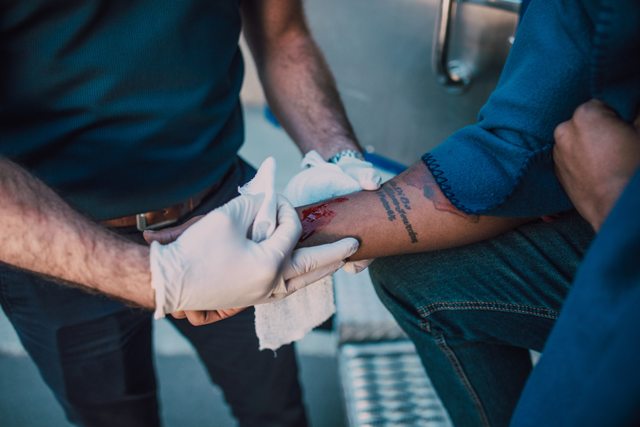Wound closure is a crucial aspect of the healing process, whether it’s a small cut or a major surgical incision. Proper wound closure helps prevent infection, promote healing, and minimize scarring. In this article, we will discuss the various techniques and tips for proper wound closure to ensure a fast and smooth recovery.
Wound closure is a critical step in the process of wound healing, as it plays a significant role in preventing infections, reducing the risk of scarring, and promoting faster healing. Whether you are dealing with a minor cut, a surgical incision, or a traumatic wound, proper wound closure techniques are essential to ensure successful healing. In this article, we will discuss the different wound closure techniques, best practices, and tips for optimal wound healing.
Understanding Wound Closure
Wound closure is the process of bringing the edges of the wound together to promote healing. This can be achieved through various techniques, including sutures, staples, and adhesive strips. The method used depends on the type of wound, its location, and the individual’s medical history.
Types of Wound Closure Techniques
Sutures
Sutures are the most common method of wound closure. They involve using a needle and thread to sew the edges of the wound together. Sutures come in various materials, such as absorbable or non-absorbable, and are typically removed after a certain period of time.
Staples
Staples are a quick and effective method of wound closure. They involve using a stapler device to close the wound edges together. Staples are commonly used in surgical incisions and are typically removed after a certain period of time.
Adhesive Strips
Adhesive strips, also known as “butterfly” closures, are a non-invasive method of wound closure. They involve using adhesive strips to bring the edges of the wound together. Adhesive strips are commonly used in small cuts and wounds and are typically left in place until they fall off.
Abrasions
Abrasions are superficial wounds caused by the scraping or rubbing of the skin against a rough surface. They usually do not require sutures and can be treated with antiseptic creams or ointments.
Lacerations
Lacerations are deep cuts that can be caused by sharp objects, such as knives or broken glass. They may require sutures or other closure techniques to promote healing and prevent infection.
Puncture wounds
Puncture wounds are caused by the penetration of sharp objects, such as nails or needles, into the skin. They can be challenging to close and may require medical attention to prevent infection.
Surgical wounds
Surgical wounds are incisions made during surgical procedures. They require proper closure techniques to promote healing and prevent complications such as infection or dehiscence (the opening of the wound).
Wound closure techniques
Various techniques can be used for wound closure, depending on the type and severity of the wound. Some common techniques include:
Sutures
Sutures, also known as stitches, are the most common technique used for wound closure. They involve the use of a needle and thread to sew the edges of the wound together. Sutures can be absorbable or non-absorbable, depending on the type of material used.
Staples
Staples are often used for wound closure in areas with high tension or movement, such as the scalp or the chest. They are quicker to apply than sutures and are often used in larger wounds.
Glue
Tissue adhesive glue, also known as cyanoacrylate glue, is a liquid adhesive that is applied to the edges of the wound to seal it. It is often used for minor cuts or lacerations and is an excellent option for children who may be afraid of needles.
Tapes
Medical tapes are adhesive strips that are used to close small wounds or as a secondary closure method for larger wounds. They are often used in combination with sutures or staples.
Tips for Proper Wound Closure
Regardless of the technique used for wound closure, there are certain tips and guidelines that should be followed to ensure proper healing. These include:
Keeping the Wound Clean
Keeping the wound clean is crucial for preventing infection and promoting healing. The wound should be gently washed with soap and water, and a sterile bandage should be applied to keep it clean.
Avoiding Tight Clothing or Bandages
Tight clothing or bandages can put pressure on the wound, which can impede the healing process. It is important to wear loose clothing and avoid tight bandages or dressings.
Avoiding Excessive Activity
Excessive activity can put stress on the wound, which can slow down the healing process. It is important to rest and avoid strenuous activity until the wound has healed.
Keeping the Wound Moist
Keeping the wound moist can promote healing and prevent scarring. This can be achieved by using a sterile dressing or ointment.
Monitoring for Signs of Infection
It is important to monitor the wound for signs of infection, such as redness, swelling, or discharge. If any of these symptoms occur, it is important to seek medical attention immediately.
Conclusion
Wound closure is a crucial aspect of the healing process, and proper techniques and tips should be followed to ensure a fast and smooth recovery. By understanding the various methods of wound closure and following the tips for proper wound care, individuals can promote healing and minimize scarring.



